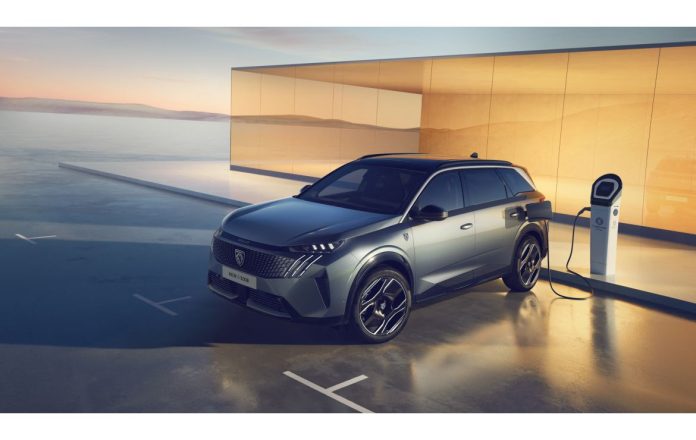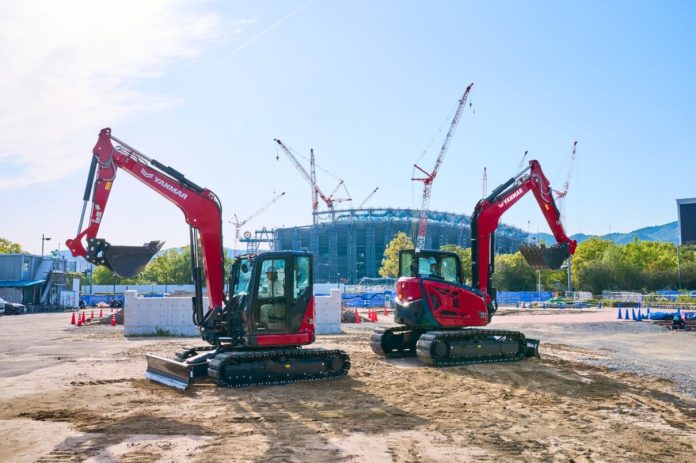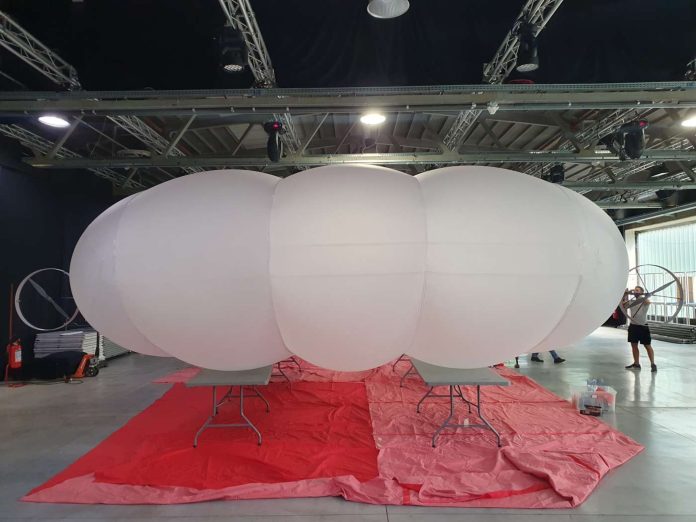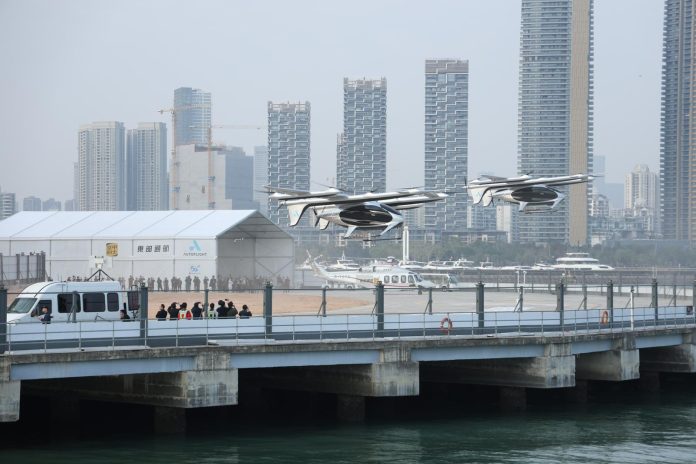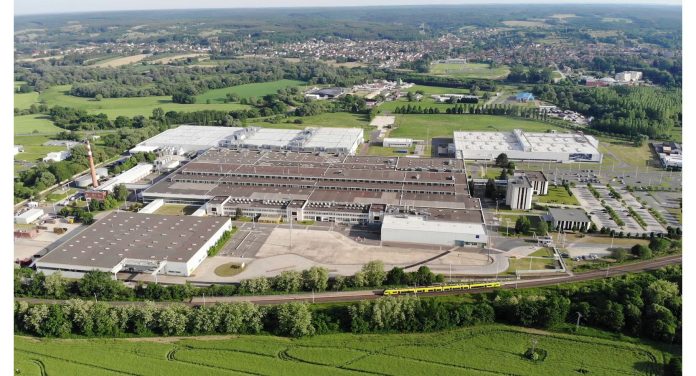According to what explained by Peugeot, today the new E-5008 is the only full electric SUV that can offer a space on-board for 7 passengers and electric range up to 660 km. Since the early phases designed as an electric model, the new Peugeot E-5008 is equipped with a range of zero-emission motors that offer an electric range from 500 to 660 km, including an AWD Dual Motor version and a Long Range version. The range of permanent magnet synchronous motors offers better efficiency: the 2-wheel drive version provides 157 kW (345 Nm) or 170 kW (345 Nm) and delivers a total power of 237 kW (157 kW at the front and 80 kW at the rear). The front motor supplies 345 Nm of torque and the rear motor 170 Nm. The lithium-ion 400-V high voltage battery with NMC (nickel, manganese and cobalt) chemical composition is placed under the floor and powers the electric motor for traction.
Peugeot E-5008 benefits from the new Stla Medium platform by Stellantis, in an elongated configuration compared to E-3008. Designed for the Group’s electric vehicles, it supplies a record energy quantity among wheels, with a maximum of 98 kWh.
New electric SUV by Peugeot: 7 places and big range
Electrification in earth handling, the novelties by Yanmar
Yanmar CE will present its range of compact machines consisting of fully electric wheel loaders, excavators and tracked minidumpers. The three excavators powered by electric motor and equipped with a hydraulic open-centre hydraulic system with Load Sensing hydraulic pump are SV17e, V8e and C08e.
With a gross power of usable 23.5 kWh and 19 kWh, the air-cooled 48V model offer high excavation and lifting performances. The electric V8e 4.5 t wheel loader is instead equipped with an 800-l bucket and with a hydrostatic transmission and has a powerful 11 kW charge capacity in the standard configuration and of 22 kW in the quick optional charge. Finally, the C08 minidumper C08e by Yanmar, weighing 555 kg, combines compact sizes with a 11.5 kWh battery and a 24V capacity.
With the “electric” issue as thread wire of Yanmar CE participation in Intermat, V7 and V7-HW wheel loaders have been implemented on a new platform able to support both diesel and electric motors. Released in diesel configuration, they fill a gap in the smallest segment of the company’s range of wheel loaders. Lighter by around half ton in comparison with the other bigger machines in Yanmar range, V7 weighs 4,250 kg and has the 0.7 m3 capacity of the standard bucket, while the V7 H-W (Heavy Weight) – due to 200 kg of additional ballast integrated into the machine – weighs 4,450 kg, with a bucket capacity of 0.8 m3.
Self-driving airship, e-motors powered by solar panels
The idea developed by the FloFleet startup is to create self-driving airships with an electronic control unit linked to software and a ground-based operator to intervene manually in case of an unscheduled course change.
The airship should have been equipped with an electric motor alimented with solar panels and with the condition to install cameras for recording.
During the feasibility and development analysis by FloFleet, which had meanwhile been flagged in Polihub’s “Switch2Product” contest, virtual design and simulation software was used. The company was officially opened in April 2023, and Dassault Systèmes included it in its startup program and made the SolidWorks 3DExperience module available to it. A whole range of technical elements were needed to model the airship with an electric motor, electronic control unit, and cameras.
The CEO Andrea Cecchi affirmed «ours was a collaborative approach. As is normal among staruppers who, although from different sectors, compare and exchange ideas and suggestions, especially abroad. We believe that sharing know-how to grow an industry benefits all competitors. Then if one company or another is better at leveraging technologies and solutions, it will be the consequence of healthy competition. So as we found companies that tangentially could interest us, we contacted them».
The result was that from circus tent companies FloFleet received useful information for 3D modeling of the airship fabric and from swimming pool manufacturers’ indications of fabric welding. However, there was some difficulty in obtaining drawings of the e-motor mount structure from turbine manufacturers, in the aircraft industry.
After several 3D virtual prototypes, the group decided to start physical experimentation to test and improve the product in the field. What is now commercially available is the second prototype, on which the British electric motor are being tested.
Now that the product is marketable, thanks to Digital Twin it will be possible to improve its performance and make new, higher-performance versions, again at low cost. For all the autonomous driving programming parts, however, the startup used the Open Source Robot Operating System automation software. Decisive for the transition from a group of friends, students, and researchers, to entrepreneurs and resource managers was the meeting with Eni, which validated the project as part of its Joule Discovery Lab.
China, flying autonomously the first interurban electric air taxi
Between Shenzhen and Zhuhai cities, in Southern China, the five-seater Prosperity eVTOL aircraft by AutoFlight has hit a significant target, flying autonomously on the 50-km route. The flight from Shenzhen to Zhuhai through the delta of Pearl River is a travel that would take three hours by car but it lasted just 20 minutes with Prosperity, designed by Frank Stephenson, the famous designer who revolutionized Mini and Fiat 500 and created iconic designs for Ferrari, McLaren and Maserati, before engineering flying taxis.
This result marks the first public flight in the world of an eVTOL aircraft on a maritime and interurban route. This flight represents then a significant milestone in the development and in the course towards the certification of this new form of mobility. The route between Shenzhen and Zhuhai is part of the future scenario of the air traffic planned by the regional government while they are developing their strategy of “low-altitude economy” that will see the opening of thousands of vertiports and hundreds of eVTOL air routes across the Greater Bay Area in the south of China.
AutoFlight partner in the region, Heli-Eastern, an important company of general low-altitude aviation and supplier of services for helicopters, has recently signed an agreement with AutoFlight for the purchase of 100 eVTOL Prosperity passenger aircrafts.
The new electric design motorbike is coming
The new FSD 59 motorbike, designed by the famous Frank Stephenson, star signature for automotive brands, has a concept that embraces the aerodynamic research and new materials. Result of a rigorous and creative process that has implied the experimentation of various architectures and technologies in the field of motorbikes with electric powertrain, FSD 59 is equipped with an electric motor that offers high performances and efficiency. It is a bike sculpted by the airflow with possibility of application in the real world. The bike was born on a monocoque platform with a modular battery and proposes a dynamic regulation of the corner of the windshield, a man-machine interface enabled for the augmented reality and a one-piece fairing.
A new electric Chinese minicar lands on the Italian market
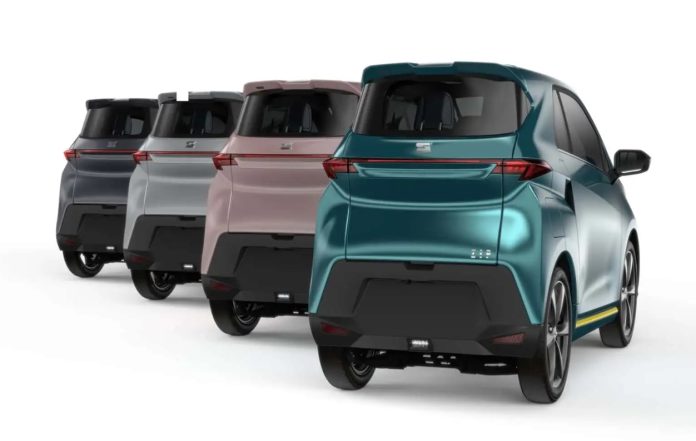
The market of electric quadricycles, in particular turmoil, is enriched with a novelty. The new minicar manufactured in China and distributed by Filante Motors for the Italian market is called Swapa ZIP. The two-seater, which has a range of about 100 kilometres and reaches the maximum speed of 45 km/h, is equipped with an asynchronous electric motor and a 6.45 kWh lithium-ion battery, composed by two units weighing 18.5 kg each. The peculiarity resides also in the fact that the two seats are in line: it is, in fact, less than one-metre large and the second passenger is placed behind the Driver’s seat, a new concept.
The company explains that inside Swapa ZIP has a large 12.3” touch display, an integrated 4G connection, the unlock through smartphone and the remote monitoring of the charge condition and of the position. The mass-production will start in April 2024 and the first deliveries are scheduled in August. “The future of urban mobility will witness a growth of electric minicars’ popularity, in particular of those classified as quadricycles that can be driven starting from 14 years”, commented Francesco Maria Farina, managing director of Filante Motors.
For the national launch of the new electric Swapa Zip microcar, Filante is searching for a new resource who takes care of communication on the primary social platforms, with a role of Brand Social Ambassador.
Electric motor for the waste collection
Some months ago, AS Labruna had presented MOVe, startup in the electrification of mobile vehicles in the off road and automotive sectors consisting of a team of engineers, with behind professional training gained in the railway sector, who since the early Nineties has collaborated with leader European users to satisfy the new motion requirements in the zero-emission modality. The direction was the design and manufacturing of full electric vehicles for the transport of goods and people and precisely a range of innovative electrified solutions has been recently presented by AS Labruna, in collaboration with its Group companies, LF official distributor of Fpt Industrial and precisely MOVe. Its first creation is Metrocab Fresia featuring 15T, fully electric and a completely ecologic generator and a lowered frame, specifically designed for the ecologic waste collection and particularly suitable for the door to door service.
Stellantis boosts the manufacturing of electric motors
Another step in the electrification course of Stellantis consists in the conversion, by 2026, of a factory headquartered in Hungary, in Szentgotthard, to a plant intended for the production of electric modules. The Group will then rely on a new site dedicated to EDM production, which joins the plants in Tremery-Metz, France, and Kokomo, Indiana, USA.
Moreover, in 2024 Mirafiori district, in Italy, will increase the manufacturing of state-of-the-art electrified double-clutch transmissions (eDCT) for Stellantis hybrid and hybrid plug-in vehicles. «Starting the production of electric drive modules in Szentgotthard speeds up our transition towards electrification. It is an intervention that further approaches us to the target of providing customers with green, safe, and economically affordable mobility», affirms Arnaud Deboeuf, Chief Manufacturing Officer of Stellantis. «The employees of the factory can be proud as their work will be an integral part of our electrified future, a fundamental factor in the offer of electric vehicles by our iconic brands, sector leaders, and increasingly customer-oriented».
The EDM manufactured in Szentgotthard will be used in the vehicles assembled on a new STLA platform dedicated to BEV. The EDM manufacturing will take place in the structures already existing in the factory. The new production activities of electric drive modules by the plant will include the machining of key components, as well as the final assembly and the testing of EDM 3 in 1, the solution that combines in a single unit the electric motor, the reduction group, and the inverter.
In the next 10 years, Stellantis is planning to invest more than 50 billion Euros in electrification, to hit the targets of the strategic Dare Forward 2030 plan.
Hitachi and ABB collaborate for the electrification of a dumper
The collaboration between Hitachi Construction Machinery and the Traction division of ABB was born to create a fully electric dumper at the service of heavy-duty mining operations. Currently, this partnership has reached a crucial phase through the accomplishment of the prototype, already been subjected to the first tests in the factory. It was shipped on January 20th, 2024 to the copper and gold mine at Kansanshi, in Zambia, where the demo and final test phase will be executed at half 2024 at the latest.
The prototype development project started in 2021, with the target of satisfying the growing demand for electric dumpers in the mining sector and sharing in the reduction of greenhouse emissions. Using the innovative battery technology by ABB and DC/DC converters with high energy efficiency, Hitachi Construction Machinery dumpers have been transformed from diesel to fully electric. These dump trucks use a new onboard electric system that draws energy via a pantograph to power the motor directly and to charge a battery energy storage system. Moreover, while driving downhill, the regenerative braking system charges the battery itself, so decreasing the charge power when the truck is connected to the pantograph, allowing the truck to remain in constant operation without charge interruptions, maintaining high productivity, while a sophisticated system of energy and thermal management of the battery maximizes its duration.
Fabiana Cavalcante, Mobile e-Power Manager, ABB Traction, stated: «We are pleased to ascertain that our collaboration with Hitachi Construction Machinery has reached this crucial time. The project not only aids in facing the problems linked with the electrification of these trucks but it also shares in enabling a world with low carbon emissions through the reduction of greenhouse emissions. We cannot wait for the prototype to demonstrate its real capabilities in the copper and gold mine in Zambia».
Development of a sovereign uncrewed aerial system
Rotor Lab, an electric motor manufacturing company, has announced its intention to support companies selected for the Advanced Strategic Capabilities Accelerator (ASCA) first innovation challenge.
The challenge, which was announced last year, calls for the development of a sovereign uncrewed aerial system (UAS) and trusted autonomy industrial capability. 11 companies have since been selected by ASCA to submit prototypes by April 2024, alongside a production plan showing how they will meet production requirements over 3 years.
CEO of Rotor Lab, Andrew Simpson, says Rotor Lab will be offering their newest innovation – a small but ultra-powerful and efficient electric motor – to companies taking part in the challenge.
«Rotor Lab’s new electric motor, RL22, has been specifically designed to address the unique requirements set forth by ACSA innovation challenge – both in technical and sovereign production considerations. The motor itself encompasses smart integrated features and a sleek design, built using Rotor Lab’s proprietary design and production process. This allows us to rapidly produce cost-effective motors at the lowest lead times with a particular focus on safety and powertrain integration».
Andrew Simpson continues «Rotor Lab is based locally in Canberra and all design and production takes place in Australia. We have spent 18 months building out a secure sovereign supply chain for this critical component of a UAS, which is essential for any company wishing to claim sovereign capability for the production of the whole system». He finishes by saying that «RL22 is just one product in Rotor Lab’s latest innovative product line which is being developed solely for sub-25kg UAS».

